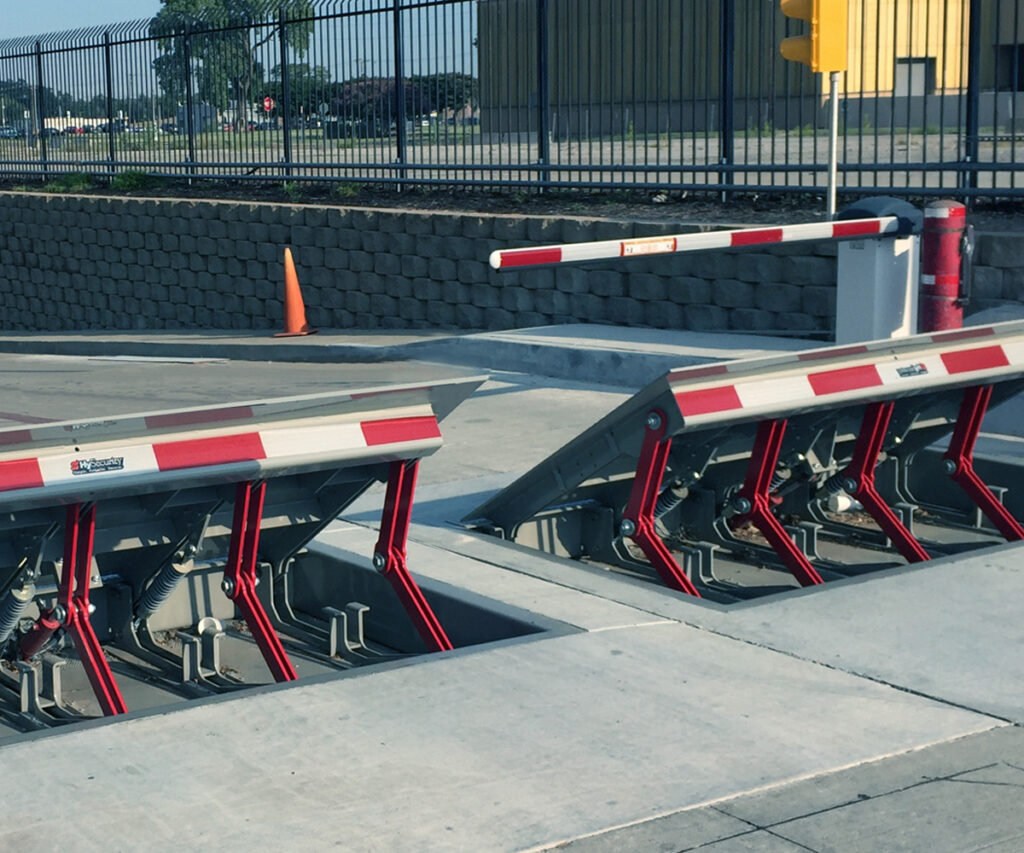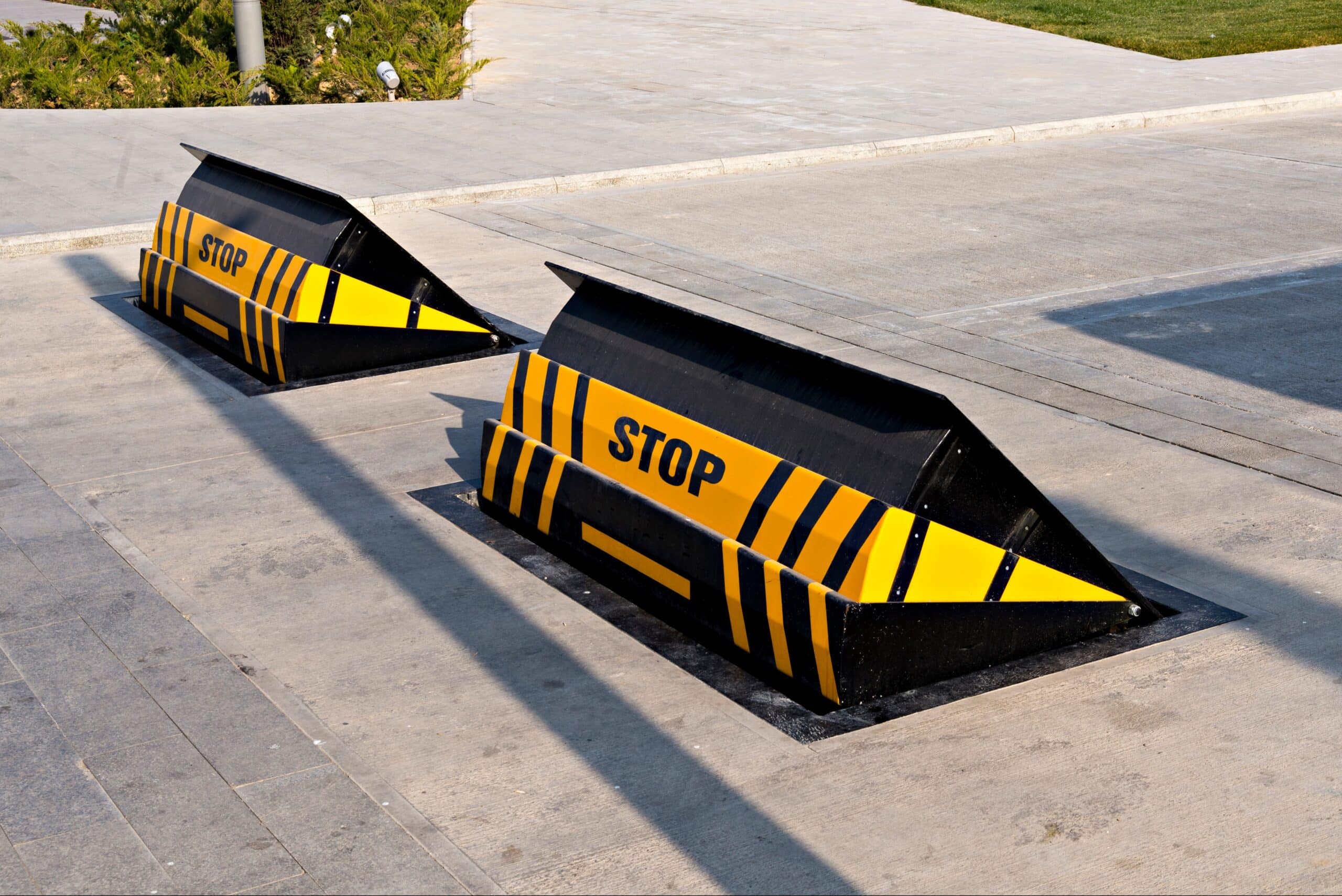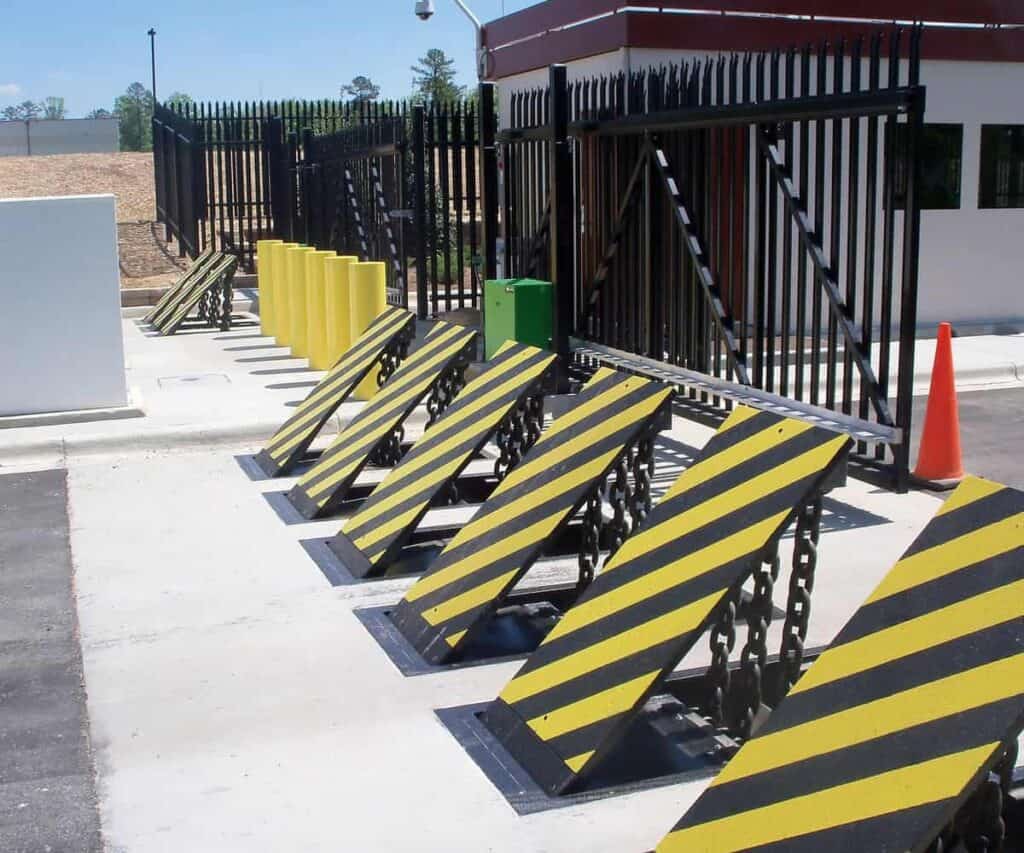Security is now a priority in the world of today, both for public and private organizations. Security systems that are robust and reliable are necessary to protect critical infrastructure, from government buildings and bases of military forces to airports and banks.
The wedge barrier is one of the most popular physical security measures. What is a wedge barricade, and why have they become the go-to security solution in high-risk locations? This article will take a closer at wedge barriers and their function, as well as the reasons they are being used more in sensitive areas.
What Are Wedge Barriers?
Wedge barriers are a security device installed at vehicle entry points that controls and restricts access. These barriers are designed to prevent unauthorized vehicles from entering secured areas. They rise from the ground, forming a wedge shape that blocks the road.
The barrier is a powerful physical barrier capable of stopping vehicles even if they are large and fast moving. It is an important element for vehicle access control.

Unlike more common security barriers, such as bollards or gates, wedge barriers are particularly effective in stopping high-impact, unauthorized vehicle attempts.
They are commonly found in areas where there is a high threat of vehicle attacks, including military installations, government buildings and airports. They are a reliable way to control vehicular access in high-risk environments, thanks to their design and operation.
Related Topic: A Guide to Crash-Rated Wedge Barriers
How Do Wedge Barriers Work?
Wedge barriers function using a fairly straightforward mechanism, but the simplicity of their operation belies their effectiveness. Typically installed flush with the ground, wedge barriers remain in a retracted position until they are activated. Once activated—either manually by a security operator or automatically through a security system trigger—the wedge barrier rapidly rises from the ground to block the path of oncoming vehicles.
The speed at which wedge barriers deploy is one of their greatest advantages. Powered by hydraulic or pneumatic systems, they can rise in just a few seconds, creating an immediate barricade that vehicles cannot bypass. This quick deployment is crucial in high-security areas where any delay in blocking unauthorized access could be catastrophic.
Once the wedge barrier is fully raised, it forms an angular barrier that extends across the roadway. The wedge shape is designed not only to block the vehicle but also to absorb and redirect the force of an impact. The high-strength materials used in the construction of wedge barriers, often reinforced steel, make them capable of withstanding even the force of a truck or other large vehicle attempting to breach security.
The wedge barriers can be connected to a larger security system that includes surveillance cameras, alarms and access control. The automatic deployment of the wedge barriers in response to threats or security breaches is seamless.
Related Topic: Find the Best Home Security System in 2024: Buyer’s Guide
Key Benefits of Wedge Barriers
Wedge barriers offer a number of advantages over other types of security barriers. Below are some of the key benefits that make wedge barriers an ideal choice for high-security environments.
1. Unparalleled Vehicle Stopping Power
One of the primary reasons wedge barriers are so effective is their ability to stop vehicles, even at high speeds. Unlike traditional gates, which may be susceptible to being rammed, wedge barriers are designed to withstand high-impact collisions from heavy vehicles. This level of vehicle stopping power is critical in protecting against vehicular attacks, a threat that has unfortunately become more common in certain security contexts.
Many wedge barriers are crash-rated, meaning they meet specific standards for vehicle impact resistance. For instance, some wedge barriers are rated to stop vehicles weighing up to 15,000 pounds traveling at speeds of up to 50 miles per hour. This ensures that even if an attacker attempts to use a vehicle as a battering ram, the barrier will stop them in their tracks.
2. Rapid Deployment
Speed is everything when it comes to security. In situations where a threat may appear without warning, wedge barriers offer a fast and reliable solution. Once activated, wedge barriers can fully deploy in a matter of seconds, immediately forming a barrier that blocks vehicle access. This speed is essential for preventing unauthorized vehicles from breaching secure perimeters and potentially causing harm.
In addition to their rapid deployment, wedge barriers can also be retracted just as quickly when necessary, allowing for controlled vehicle entry and exit as part of a broader access management strategy. This makes them highly adaptable to a variety of security needs.
3. Customizable and Versatile Design
Another advantage of wedge barriers is their versatility. They can be installed in a wide range of environments, from narrow entrances to expansive driveways. Many manufacturers offer customizable wedge barrier systems that can be tailored to meet the specific needs of a location, whether that involves adjusting the size of the barrier, its crash rating, or its aesthetic appearance.
Some wedge barriers are designed to blend seamlessly into their surroundings when retracted, making them an unobtrusive security measure that does not detract from the visual appeal of the location. This is particularly beneficial for corporate campuses, financial institutions, and other locations where appearance is as important as security.
4. Durable and Low Maintenance
Wedge barriers are built to last. Made from high-strength materials like reinforced steel, they are engineered to withstand both the elements and high-impact collisions. This durability makes them a reliable long-term solution for securing high-risk areas.
In addition to their durability, wedge barriers typically require very little maintenance. Because they have relatively simple mechanical systems, they are less prone to breakdowns than more complex security systems. This low-maintenance design translates to fewer repairs and lower operating costs over time, making wedge barriers a cost-effective option for many organizations.
5. Seamless Integration with Other Security Systems
Wedge barriers are not standalone security devices; they are often part of a broader, integrated security system. They can be connected to access control systems, allowing for automated operation based on pre-defined security protocols. For example, a wedge barrier can be set to automatically deploy when an unauthorized vehicle approaches a restricted area or when triggered by an alarm.
The ability to integrate other security measures such as surveillance cameras and biometric scanners with alarm systems enhances the overall security posture at a facility. The security personnel can remotely monitor and control wedge barriers, giving them more flexibility and control of the security system.
Related Topic: How Do You Turn Off a Smoke Alarm Safely?
Common Applications of Wedge Barriers
Given their effectiveness, wedge barriers are commonly used in a wide range of high-security environments. Some of the most common applications include:
- Military Bases: Where sensitive information and personnel must be protected from vehicle-based threats.
- Airports: Ensuring that restricted areas are protected from unauthorized vehicle access.
- Government Buildings: Providing a secure perimeter around embassies, courthouses, and other critical government facilities.
- Financial Institutions: Protecting banks and financial hubs from unauthorized vehicular entry.
- Industrial and Power Facilities: Securing critical infrastructure, such as power plants and water treatment facilities.
Final Thoughts:
Wedge barriers have emerged as a crucial component in securing high-risk areas, offering unmatched protection through their robust design and rapid deployment capabilities.
Their ability to integrate seamlessly with modern security systems makes them an ideal solution for locations requiring advanced protection from vehicular threats. Whether you need to stop unauthorized vehicles or add an extra layer of defense for sensitive sites, wedge barriers provide reliable and cost-effective security.
For businesses and organizations seeking high-quality wedge barriers, R3 Access Inc. stands as a top-tier provider. With years of expertise in delivering tailored security solutions, R3 Access Inc. offers innovative and durable wedge barriers designed to meet the most stringent security standards. Protect your assets, infrastructure, and personnel by partnering with a trusted leader in security solutions.
Related Topic: HySecurity’s Recent Product Updates: A Comprehensive Overview
FAQs
1. What are wedge barriers used for?
Wedge barriers are used to prevent unauthorized vehicles from accessing restricted areas by creating a strong, wedge-shaped obstacle that blocks vehicle entry.
2. How do wedge barriers stop vehicles?
When activated, wedge barriers rise from the ground and form a physical barrier designed to withstand and stop high-speed vehicle impacts.
3. Where are wedge barriers typically installed?
To protect against vehicular attacks, wedge barriers are often installed in high security areas such as military bases, airports and government buildings.
4. Can wedge barriers be integrated with other security systems?
Yes, wedge barriers can be integrated with access control systems, surveillance, and alarms for automated or manual control during security breaches.
5. Who provides reliable wedge barriers?
R3 Access Inc. is a top provider of durable, crash-rated wedge barriers tailored to high-security environments.



